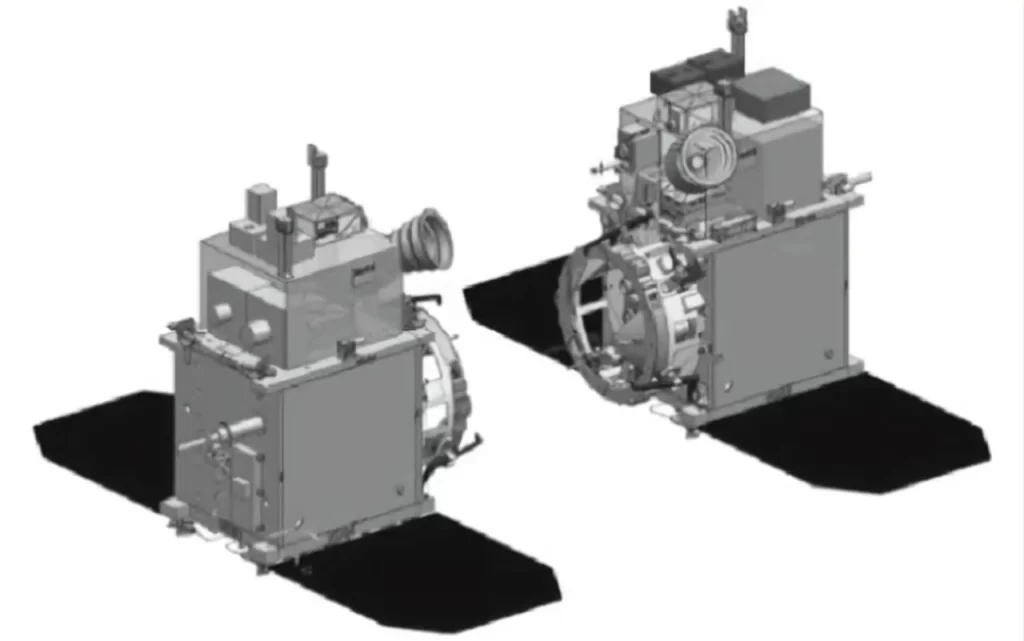Docking in space is a technique where two objects, like satellites, connect while flying. This skill is crucial for various purposes, such as moving items or people between objects or joining them to form larger structures. Such a capability is vital for future space missions, including those by the Indian Space Research Organisation (ISRO).
After the success of Chandrayaan-3, ISRO is gearing up for the Chandrayaan-4 mission, which is planned for later this decade. A key objective of Chandrayaan-4 is to collect and bring back moon rock samples to Earth. To achieve this, the mission will involve complex docking manoeuvres in orbit. Here, docking is essential for transferring the moon rock samples from one spacecraft, which collects them on the Moon, to another that brings them back to Earth. This procedure ensures the safe and secure handling of these valuable lunar samples.
“Beyond lunar missions, docking is crucial for operating space stations and undertaking significant projects in space. For instance, astronauts going to a space station need a spacecraft to dock with the station, ensuring their safe journey,” says Girish Linganna, an expert on the military-space domain.
In building larger space structures, like satellites, docking plays a key role. When two satellites near each other at around 10 km per second, they communicate and coordinate. The leading one slows down, allowing the trailing one to catch up. They use onboard cameras or lasers to align and attach, forming a larger structure, a process critical for creating extensive structures in space.
Mission SPADEX
ISRO is now working on the SPADEX mission or the Space Docking Experiment. The organization aims to launch this mission by the end of 2024.

ISRO is working on homegrown technology crucial for creating its Indian Space Station, or ‘Bhartiya Antariksha Station,’ planned for 2035. This technology is key because every space station, like the ISS (International Space Station), is constructed by connecting smaller units to form a larger structure.
ISRO is set to launch a satellite that will split into two components, known as the Chaser and the Target, upon reaching orbit. These segments will initially drift a few kilometres apart. Then, they will autonomously approach each other and dock together in space, merging back into a single satellite. This recombined satellite will function as a unified entity. This de-docking and re-docking technology represents a novel and pioneering approach to India’s space endeavours.
“The Chaser satellite will have cameras and sensors to locate the Target satellite. When it gets close enough, the chaser will use a robotic arm to connect with the target. A docking mechanism will link them. After docking, they will merge into one operational satellite,” explains Linganna.
This technology of separating and then rejoining has the potential to transform how satellites are launched and function. Historically, satellites were sent into space as single units, making them challenging and costly to repair or upgrade. “Using the Docking and De-Docking technology, satellites can be sent into space in smaller segments, which are simpler and less expensive to transport. Only the impacted part needs to be repaired or upgraded if a satellite requires repair or an upgrade. This approach could lead to considerable savings in both time and costs,” says Linganna.
ISRO anticipates that this docking and de-docking technology will open doors for novel and inventive uses of satellites. For instance, this method might enable the formation of satellite constellations that collaborate for enhanced coverage and efficiency. Additionally, it could allow for the development of satellites tailored for particular missions.
ISRO’s advancement in docking technology is evident in its upcoming SPADEX initiative, slated for the last quarter of 2024. This step underlines ISRO’s commitment to advancing space technology, which is significant in global space research and development. Through SPADEX and other missions, ISRO seeks to enhance its space exploration capabilities, contributing substantially to the field.
